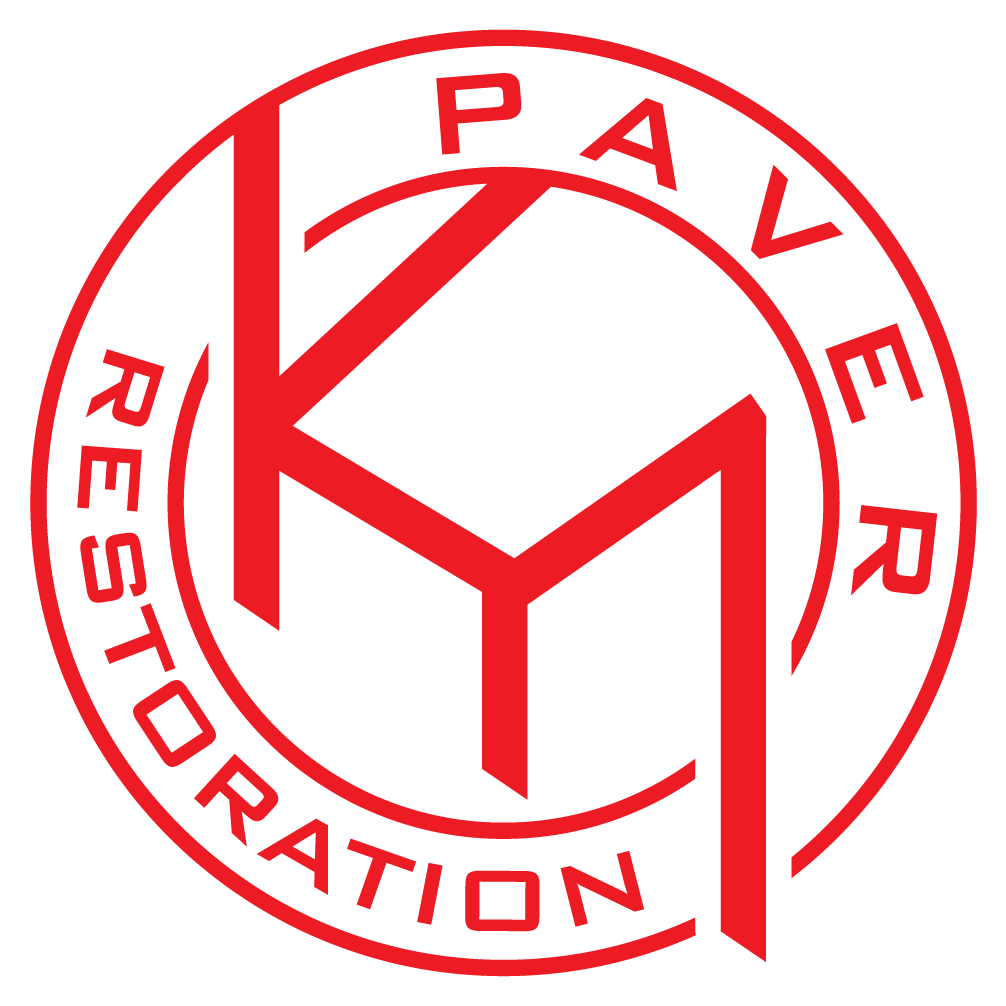What is efflorescence in brick pavers?
There is a chance that after a few weeks or months pass, a white haze may appear on the surface of the pavers. This is known as efflorescence. It may appear randomly or in certain areas and be more pronounced on dark-colored pavers. The white haze may give the impression that the color of the brick pavers is fading. When wet, the white disappears, and the colors of the pavers are enhanced. When they dry, the white haze reappears.
Efflorescence is entirely natural and will disappear with time.
There is no reason to be concerned that your pavers are damaged or defective. The concrete pavers are experiencing a natural process. It is a condition in all cement-based products, as well as in many other paving products. But the condition will usually correct itself with time and exposure to the elements. Here in Florida, it only takes 2-4 weeks after installation, depending on the season. The reason it is season dependent will be explained in the next section.
The chemistry of efflorescence (“to flower out” in French) is the migration of a salt to the surface of a porous material, forming a coating. The essential process comprises the dissolving of an internally held salt in water as the water evaporates; it leaves the salt behind, which creates a white, fluffy deposit, thus resulting in white deposits which are referred to as “efflorescence” in this instance, efflorescence is sometimes referred to as “salt petering.” Since primary efflorescence brings out salts that are not ordinarily part of the cement stone, it is not structural.
All concrete products contain cement, which produces lime or water-soluble calcium oxide. Lime can also be in the bedding sand, aggregate base materials, or soil. Although concrete pavers are solid, strong, and very dense, they contain millions of microscopic capillaries that run from the interior of the surface. Moisture from rain, sprinkler systems, underground sources, poor site drainage, or dew enters these microscopic capillaries. Calcium oxide inside the paver reacts with the water in the capillaries and forms calcium hydroxide. This rises to the surface, reacts with the carbon dioxide in the air, and forms a white haze of calcium carbonate. When moisture on the surface evaporates, the white haze of efflorescence becomes visible.
Most states, especially northern ones, don’t have the subtropical climate we have here in Central Florida. Some people may be surprised that we have rivers flowing below our feet in the ground. All this moisture in the ground permeates through the soil, the paver base material, and the brick paver itself. The reason this is important is that the process of releasing efflorescence is expedited here in the Central Florida region, as well as further south. Up north, this process may take up to 4 months before the efflorescence is naturally released from the brick paver surface. In Florida, however, it can take as little as two weeks during the rainy season.
NOT ALL PAVERS WILL HAVE EFFLORESCENCE VISIBLE DIRECTLY AFTER INSTALLATION. Some may not demonstrate efflorescence for a week, and some may not have any.
Eliminating efflorescence
Most producers of pavers put chemical additives in the concrete to reduce the likelihood of efflorescence. In most cases, these additives do the job. However, eliminating the chance of efflorescence isn’t possible because it’s a natural byproduct of hardened concrete. It will stop when no more calcium hydroxide can move to the surface. There are cleaners available that can remove efflorescence. These will enhance the natural beauty of your concrete paver product.
Frequently asked questions.
Q: When will efflorescence stop?
When the supply of calcium hydroxide is exhausted. If you live in an area of frequent rain and sunny days, efflorescence and its passing may occur quickly. However, the process may take much longer in drier climates.
Q: Will efflorescence go away naturally?
Since many factors are involved in its formation, it is difficult to determine when efflorescence will stop. However, just as it appears naturally, efflorescence will eventually disappear. Over time, rainwater can wash and wear away. Often, here in Florida, for example, this time frame can be as short as two weeks in the rainy season and could take months during droughts or winter times.
Q: Can efflorescence be removed without the wait?
Yes, efflorescence can be chemically removed if you can’t take the wait. Again, this process can be as short as two weeks. There are remedies we can provide you with that will help expedite this process regardless of season, saving you a lot of money as the brick paver surface owner.
For your expert brick paver sealing company, give us a call at the main office at 352-282-2886, or, for the fastest response, submit an online request for an estimate by clicking this link.
All your Brick paver sealing in Hernando County, Citrus County, Pasco County, Sumter County, Lake County, Tampa Bay, and Central Florida, including all surrounding areas.
Brick Paver Maintenance Plans



Comments